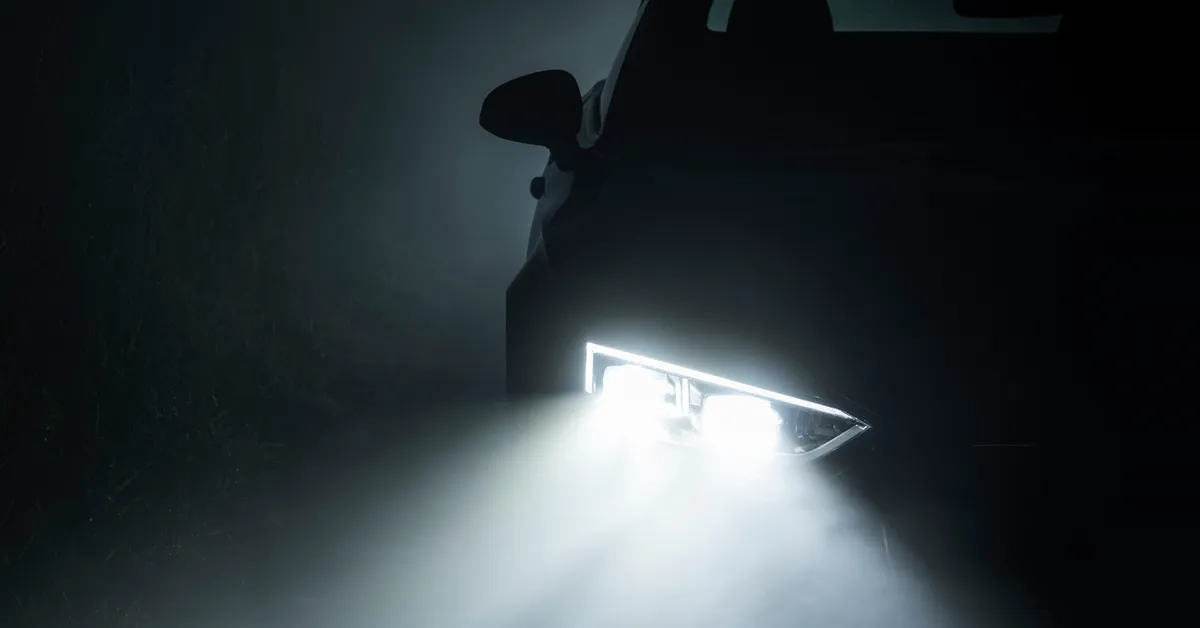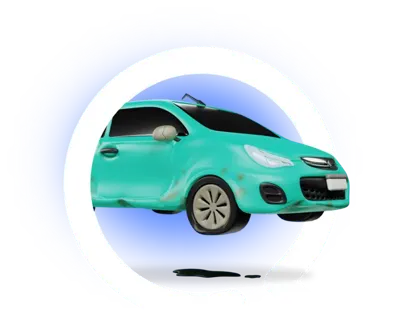
While winter tends to get a bad rap for driving conditions – and rightly so – it's easy to underestimate how tricky autumn driving is. In fact, autumn can create some of the most unpredictable driving conditions of the year. Summer might not feel like long ago, so it can be quite disorienting to find yourself dealing with colder mornings, darker evenings and fierce sunlight at exactly the wrong time – and angle.
Across our decades of recycling vehicles, we’ve seen our fair share of people who’ve had to scrap their car due to accidents, so we know how small changes can make a big difference to your safety. With that in mind, here are five of the biggest driving dangers to watch out for.
Wet leaves and slippery roads
Leaves aren’t normally known for their intimidating, dangerous qualities, but when they start to fall and collect on the tarmac en masse, they can quickly turn into a hazard - forming a thin, slick layer that behaves almost like ice under your tyres, reducing your grip, increasing your stopping distances and making cornering unpredictable. The best way to counteract it is to slow down, especially after rainfall or early in the morning when dew remains on the road. It’s also worth bearing in mind that the mixture of decaying leaves and moisture can also conceal faded road markings, making it harder for you to judge your position.
It’s a good idea to clean your windscreen and wipers before you set off, as this stops leaves from blocking your visibility. Keep an eye out for piles of leaves that gather along kerbs or at junctions, as these may cover potholes, drain covers or debris that could puncture tyres. And if you park on any streets lined with trees, especially at home, make sure that too many leaves don’t collect under your car, since trapped moisture can also lead to corrosion.
Low sun glare and reduced visibility
Everyone loves a bit of sunshine in summer, but perhaps not directly to the face. Which, unfortunately, is often exactly what happens in autumn. Due to the Earth's rotation, the sun moves closer to the horizon and sets earlier. That can put it in an awkwardly low position when you’re travelling to and from work, sending potentially dazzling light directly into your eyes or across your windscreen. If you’re really unlucky, this may even be at the same height as oncoming traffic. Dirty windscreen glass can amplify this problem, as it works to scatter light further and obscure your vision. It’s yet another good reason to wipe both sides of the windscreen before setting out and make sure that your washer fluid is topped up.
Your car visor only blocks part of the sun’s path, so it helps to keep a pair of sunglasses in your glove box for sudden bright spells. Keeping your mirrors and dashboard clean can reduce internal reflections that distract you when light hits at sharp angles. If you do find that visibility has dropped, take care to increase the gap between you and the car ahead, to give you time to react.
Fog and mist on rural routes
Early autumn mornings often start with thick mist that stays in low-lying areas, distorting depth perception and making road edges disappear - especially along country roads without clear markings. A bit counterintuitively, it’s best to switch on dipped headlights instead of full beam - which reflect off water droplets and can actually make the glare worse. Instead, keep your fog lights for the heaviest conditions and don’t forget to turn them off once your visibility improves, to avoid dazzling other drivers.
Moist air can coat the inside of windows with condensation, so it’s essential to set your heater to demist mode before you drive and check that your rear window heater works. In prolonged mist, reduce your speed gradually rather than braking sharply, as following drivers may have less time to see your lights.
Hidden potholes and road debris
As temperatures drop and rainfall increases, small cracks in road surfaces can expand, turning into deeper potholes. Fallen leaves or puddles can disguise these imperfections, and hitting one at speed can really do a number on your tyres, wheels or suspension – or if you’re really unlucky, all three.
Slow down in any areas that are prone to flooding, and steer clear of large puddles unless you have no safe alternative. Approaching standing water at a lower speed tends to reduce the force of any impacts with hidden potholes, as well as giving you more time to steer clear of any more unexpected obstacles.
If you suspect that a pothole has caused a problem, try and inspect your car as soon as you can. Bulges on tyre sidewalls, rattling noises or a change in steering alignment can all indicate damage that needs urgent attention – it can be unsafe to drive otherwise. It’s also worth noting that you can give your tyres a better chance of absorbing shocks from rough surfaces by keeping them properly inflated. And report large potholes to your local authority so that repairs can be arranged before they worsen.
Wildlife crossing at dusk
Autumn is the main migration and mating season for some larger animals, so you may spot noticeable increases in movement at dawn and dusk, especially in rural areas. Deer, foxes and smaller mammals have an unfortunate habit of appearing suddenly from hedgerows or woodland, particularly near open fields and forests – and if they catch you off-guard, that can easily be enough to cause a crash. What’s more, bright headlights can startle or confuse animals, which may cause them to freeze on the road instead of running away.
Watch for road signs that warn of wildlife and reduce your speed as light fades. You can spot their reflective eyes sooner on quiet country lanes by using full beams, when no other drivers are on the roads. If you encounter any wildlife, slow down steadily instead of swerving, since sudden movements risk losing control or entering oncoming traffic. Again, you can give yourself more time to react by keeping a steady pace and scanning the verges ahead.
This is just a quick roundup of the biggest autumn dangers, but it’s far from a comprehensive one. As a general rule of thumb, it’s best to exercise caution above all else. Hopefully, that will help you avoid accidents and maximise the lifespan of your car.
When your car does reach the end of its life, EMR Vehicle Recycling will always be here to help you get the very best price. All you need to do is enter your car reg and postcode into the fields on our homepage, and you’ll have an instant online quote before you can say “scrap my car”. Ready to find out what yours is worth?

